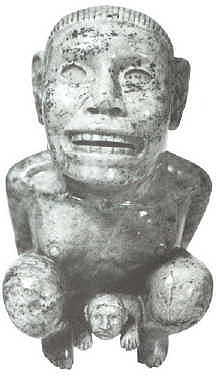PL-IE-Notations.htm

PROTO-LANGUAGE
AND
INDO-EUROPEAN
NOTATIONS
by Patrick C. Ryan
(3/6/99)
These notational conventions will be used
in all essays at this website.
CONVENTIONS
Proto-Language
E, A, O,
P[?], P[H], P[?]F, PF[H], F, F[H],
T[?], T[H], T[?]S, TS[H], S, S[H],
K[?], K[H], K[?]X, KX[H], X, X[H],
M, M[H], N, N[H], Q, Q[H],
R, R[H],
?, H, ¿ (formerly $), HH
([?] indicates glottalization; [H] indicates aspiration;
? = voiceless laryngal {glottal} stop; ¿ is a voiced pharyngal fricative {originally, a voiceless pharyngal stop};
H is a voiceless laryngal fricative); HH is a voiceless pharyngal fricative;
Q = /ng/, a voiced dorsal nasal.)
Indo-European
C+A/E/O had become C+a (with - or y/w-glides) during the Pontic-Nostratic stage.
e, a, o
are the result of grammatical Ablaut or
vowel-coloration(for a, see below).
e:, a:, o:
are the result of grammatical Ablaut (Indic vRddhi);
vowel-lengthening
or are the inherited qualities of vowels formerly combined with laryngal-pharyngals (H), and so lengthened and preserved;
or from the aspiration (h) of preceding voiceless aspirated stops
derived from earlier affricates
(e.g. p[h] from P[H]F; t[h] from T[H]S; k[h] from K[H]X),
and from aspirated non-stops:
(e.g. r/l[**h] from R[H]; w[**h] from F[H]; m[**h] from M[H]).
i (i:) and u (u:)
are exclusively the result of avocalic y and w.
b, bh, p, p[h]1, w,
d, dh, t, t[h]1, s,
g, g[^], gh, g[^]h, k, k[^], k[h]1, k[^][h]1,
g[w], g[^][w], k[w], k[^][w],
m, n, (n)g, (n)g[^], (n)k, (n)k[^],
r, l, l(y), L,
y (from PL ¿E [Pontic-Nostratic ¿y]),
H (from PL ?, ¿, H, HH except ¿E).
g[w]h and g[^][w]h result from combinations of g[w] and g[^][w] + H.
([h] indicates aspiration; [^] and [y] indicate palatalization; [w] indicates velarization;
l[y] indicates a palatal /l/; L indicates a velar /l/;
H indicates an unspecified "laryngeal", in Early IE, probably /x/).
[H1(neutral; from ?) is, in my opinion, an unnecessary reconstruction;
all H2/3/4 appear in Hittite as h except those derived from PL ?].
H2(a-color; from H-), H3(o-color; from Hw), H4(e-color; from Hy)
IE b is rare as an initial and even questioned by some scholars as a root final. I have found that Early IE *b (from PL P[?]) appears in the stage of IE normally reconstructed as w or bh when a root initial though usually as b as a root final. It is probable that the presence of a nearby laryngal-pharyngal (H) was the conditioning factor in P[?] becoming IE initial bh as opposed to w; the expected coloring from the H2,3,4 does not, however, seem to occur in this combination.
However, for a better view of the "laryngeals", read the essay entitled The "Laryng(e)al" Theory — applying Occam's Razor at this website.
Final Early IE voiced aspirated stops + a can become unaspirated: -bha becomes -b(a); -dha becomes -d(a); -gha becomes -g(a).
When IE s-mobile is combined with an initial voiced stop or affricate, the stop or affricate is de-voiced and de-velarized
(e.g. s + b(h)VC(V)) becomes sp(h)VC(V);
when s-mobile is combined with r-, a /-t-/ is inserted [s-t-r-] for euphony and ease of pronunciation.

the latest revision of this document can be found at
HTTP://WWW.GEOCITIES.COM/Athens/Forum/2803/PL-IE-Notations.htm

Patrick C. Ryan * 9115 West 34th Street - Little Rock, AR 72204-4441 * (501)227-9947
PROTO-LANGUAGE@email.msn.com


